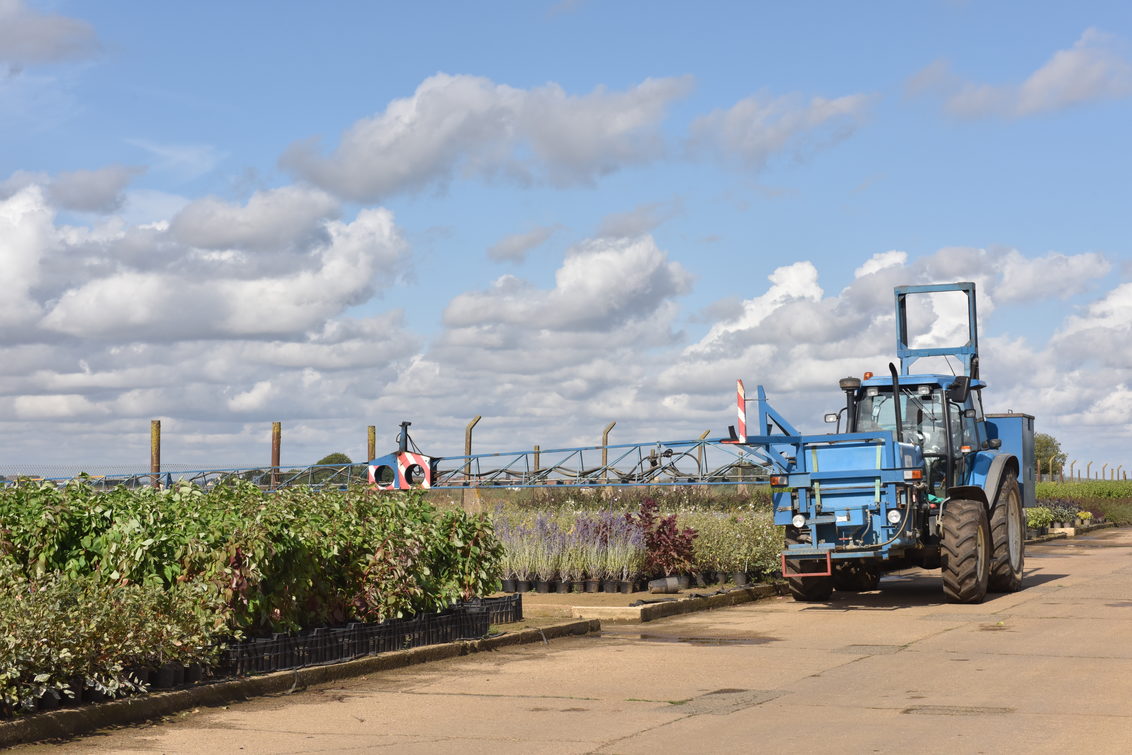Don’t forget your ‘pre-flight’ sprayer checks
Getting the best from your crop protection sprays while minimising waste and avoiding risks to the operator, any bystanders and the environment relies on accurate application. That in turn depends on the sprayer being well maintained and set up.
Whether it’s a pistol, lance or short pedestrian-operated boom; knapsack or mounted equipment, your spray kit should be fully inspected and calibrated regularly by a competent person. The start of the season is an ideal time to remind yourself what this entails – and a thorough check now could avoid downtime later.
Some sprayers have, by law, to pass a regular ‘MoT’ test under the National Sprayer Testing Scheme (NSTS). Small boom sprayers up to 3m wide, and equipment such as slug pellet and micro-granule applicators, need a first test before they are five years old, and then every six years.
Sprayers with booms wider than 3m have to be tested before they reach five years old, and then every three years. Orchard-style air-blast sprayers that some tree growers use also need a test within their first five years, and then every three years.
Knapsack, hand-held and pedestrian equipment isn’t required to undergo the formal test, but the legislation still stipulates it’s routinely inspected by a competent person and a record kept.
Check the NSTS website for more details and to download this leaflet.
Pre-season and regular checks
Before doing anything else, make sure the tank is empty, clean and depressurised – as it should have been when last put away. If necessary, clean by part-filling the tank with a solution of detergent or proprietary cleaning product and spraying through into a container for safe disposal. Repeat this operation another two times – the so-called ‘triple rinse’.
Examine components including tank, lid, strainer, seals, hoses and filters for general cleanliness and condition. Are there any obvious cracks or holes in the tank? Are hoses still flexible, sound and free from surface cracks that could burst? Pay particular attention where pipes need to bend or are next to moving parts which could rub. And don’t forget the filters fitted in the trigger mechanism and behind the nozzle of hand-held pistol sprayers.
Inspect nozzles for deposits and the condition of the orifice – it should show no signs of wear or damage – and for correct fit and alignment. Remove any blockages using compressed air: the orifice can be damaged by bits of wire or sharp instruments. Worn or damaged nozzles result in incorrect flow rates, droplet sizes and spray patterns.
Make sure straps on knapsack sprayers are clean, secure and free from wear.
The pressure gauge is one of the most important components: if it’s inaccurate it will be impossible to calibrate the sprayer and apply the correct dose. Ensure it sits correctly at zero when unpressurised and have it checked at least once a year. It should be mounted as close as practicable to the delivery point, as pressure drops along the supply hose.
If everything is satisfactory, gradually fill the tank with clean water, looking out for leaks as you go. If there aren’t any, pressurise the sprayer, checking the pump operation and for leaks again, particularly the hoses and connections, and the trigger and lance of hand-held equipment. Spray into a container to check the on-off mechanism and anti-drip valves are working properly. Watch the spray pattern from the nozzle for any obvious issues with uniformity.
Spray until no more liquid comes from the nozzle – there should be no more than about 250ml left in the tank.
Check flow-rates regularly – measure the water output over a given time with the nozzles and pressures you use and compare with the sprayer manufacturers’ data.

Checks at every use
You should visually inspect, and look for leaks, every time you use a sprayer. Just dropping a pistol or lance can damage a nozzle so keep enough spares in store.
Free knapsack and hand-held sprayer checklists to help with your record-keeping can be downloaded from the National Sprayer Testing Scheme or the Voluntary Initiative websites.
I can’t stress how important it is to establish a routine for these checks – it’s too easy to think you can do it just at the start of the season and then forget all about it. It’s not only your crop that you could be putting at risk by wrongly dosing with product. Many of the most important checks – dripping seals, split hoses, damaged tanks and the like – pose a risk both to the operator and the environment.
So check carefully every time a sprayer is used, to protect you and your colleagues, your crop, the environment and your nursery’s reputation – not to mention its bank balance.
In the next blog we’ll look at simple ways to calibrate sprayers to ensure you’re applying the correct dose rates to your crops.

